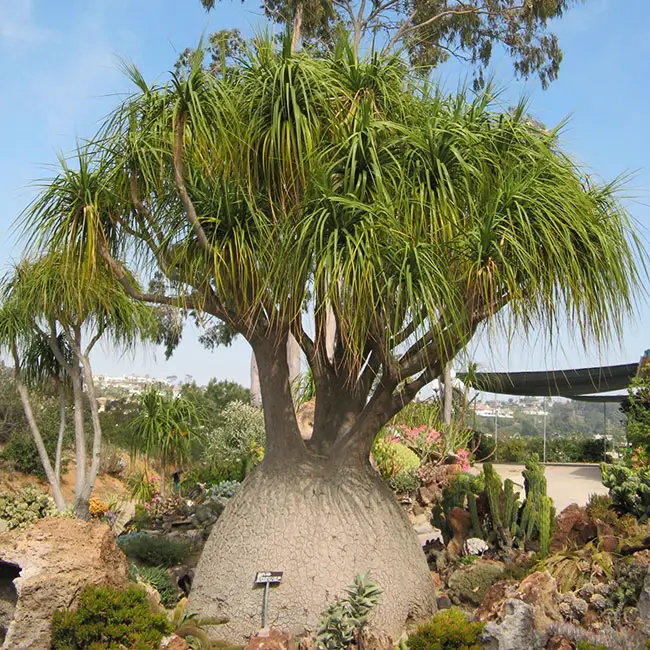
Despite its name, the Ponytail Palm Tree, scientifically known as Beaucarnea recurvata, is not a true palm tree. Instead, it belongs to the Asparagaceae family and is indigenous to arid regions of Mexico.
The name “ponytail” is derived from its distinctive, swollen base that resembles a ponytail of hair. While its long, slender leaves may give it a palm-like appearance, it’s important to note that it’s not botanically related to true palms.
This slow-growing palm is an excellent choice for small gardens. It can endure temperatures as low as 15°F and is suitable for cultivation in states such as Alabama, Arizona, Arkansas, California, Georgia, Louisiana, Mississippi, Nevada, Oregon, and Texas.
Quick Facts:
| Scientific name: | Beaucarnea recurvata |
| Common names: | Ponytail Palm, Pony Tail Palm, Elephant-Foot Tree, Elephant Foot, Monja, Palma culona. |
| Origin: | Native to Mexico. |
| Growth Rate: | Slow. Up to 10 – 20 ft tall and 5-10 ft wide. |
| Cold Tolerance: | USDA Zones 9a (20 to 25 F) to 11 (above 40 F). |
| Light Req: | Full sun to Partial shade. |
| Water Req: | Moderate. |
| Soil Req: | Widely adaptable. |
| Fruit: | Yes. Red. Not edible. |
| Propagation: | By separation of offsets. |
Identifying Characteristics of the Ponytail Palm 
In its early stages, the Ponytail Palm lacks a trunk, but as it matures, it develops a brownish-gray bark that swells significantly at the base, reaching diameters of up to 12 feet.
When the palm is just a few years old, it possesses a single smooth trunk crowned with dark green fronds. However, with time, it may develop a few branches.
Ribbon-like leaves cluster at the tips of these branches. These thin leaves measure about 6 feet in length and just 1 inch in width.
They emerge in a cascading, fountain-like fashion, gracefully curling downward, thus resembling the appearance of a pony’s tail—hence its name, the Ponytail Palm.
Flowers and Fruits of the Ponytail Palm 
As for flowers and fruits, the mature Ponytail Palm produces creamy-white flowers during spring or summer. These flowers bloom for several weeks, occurring two or three times a year.
They are clustered on long inflorescences that extend beyond the length of the leaves. Notably, male and female flowers grow on separate plants. Following the flowering period, reddish small fruits, approximately 1/2 inch long, may appear.
Caring for the Ponytail Palm
The Beaucarnea recurvata is a slow-growing palm that can attain heights of 10 to 20 feet and a width of 5 to 10 feet, although it typically stays under 10 feet. It makes for an excellent indoor plant, provided there is ample light in the room.
This palm can withstand cold temperatures down to 18°F when sufficiently mature. It thrives in USDA Zones 9a (20 to 25°F) to 11 (above 40°F) and prefers full sun but can also tolerate partial shade.
Beaucarnea recurvata shares a close botanical relationship with Yuccas and shares similar growth conditions. It exhibits excellent drought tolerance and thrives in moist but well-drained soil.
It’s important to allow the soil to dry between waterings, as overwatering can be detrimental to this palm. To prevent nutritional deficiencies, it’s recommended to use a high-quality palm fertilizer with a continuous-release formula, applied twice a year during the growing season.
Propagation of the Ponytail Palm is typically done through the separation of offsets.
Ponytail Palm Pictures
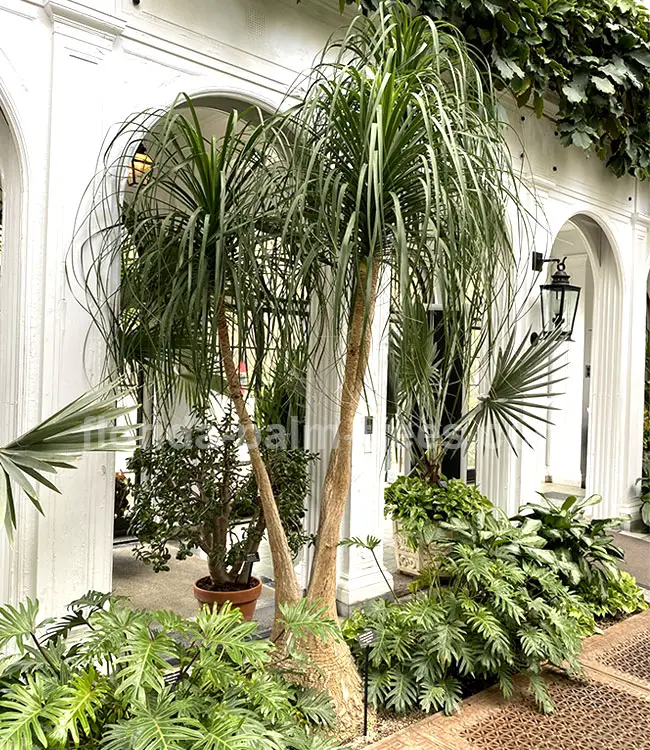

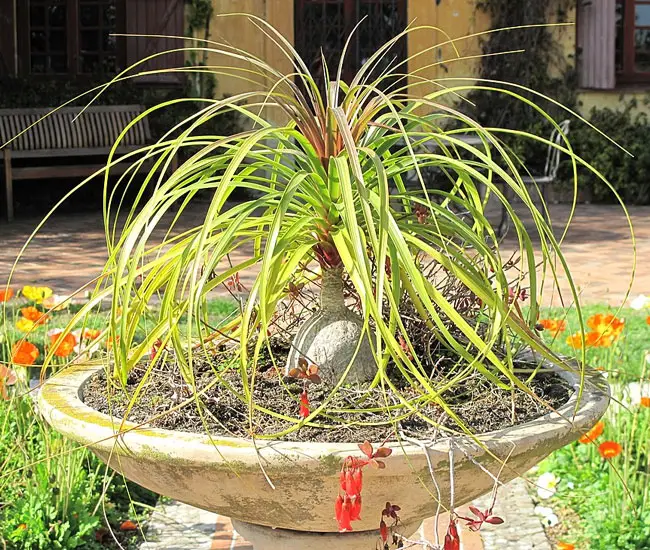
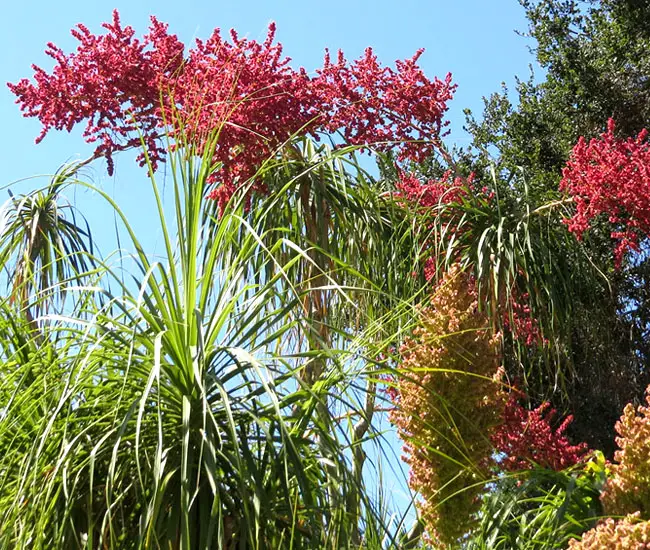
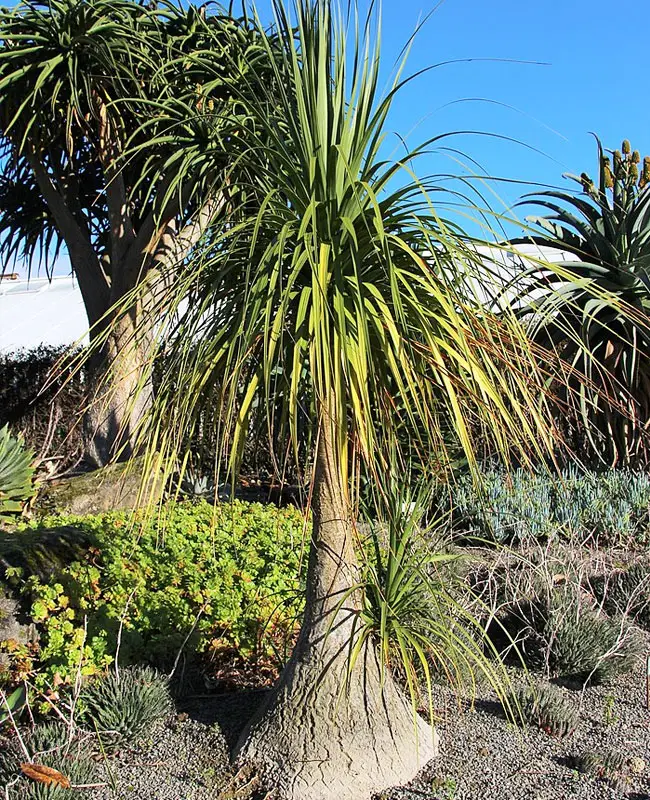
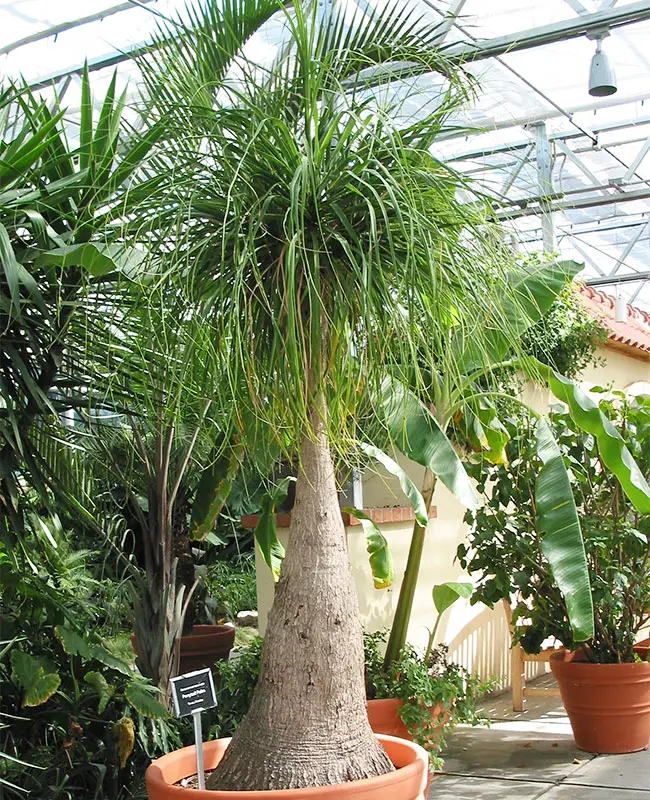
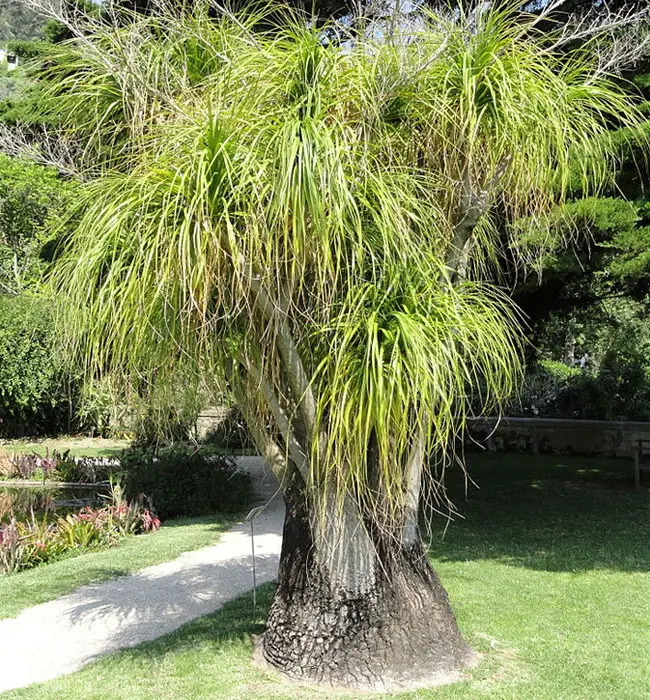
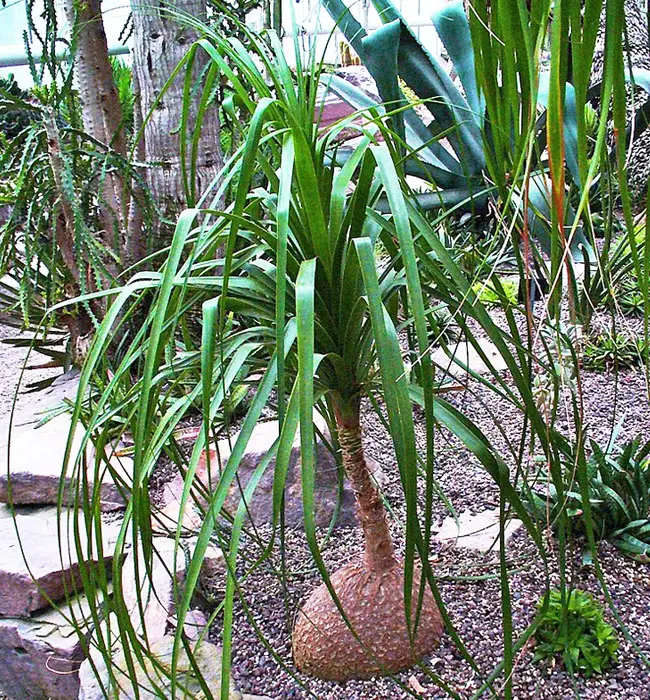
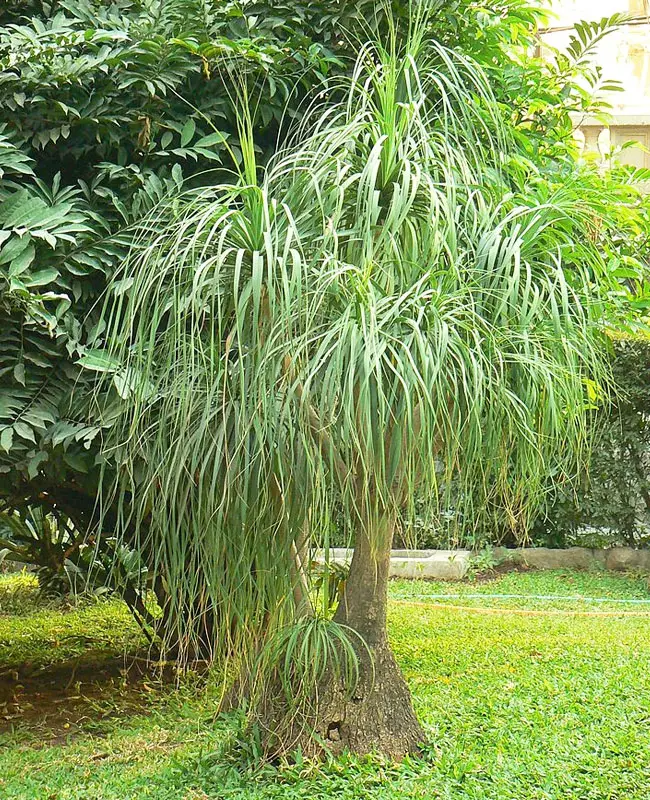
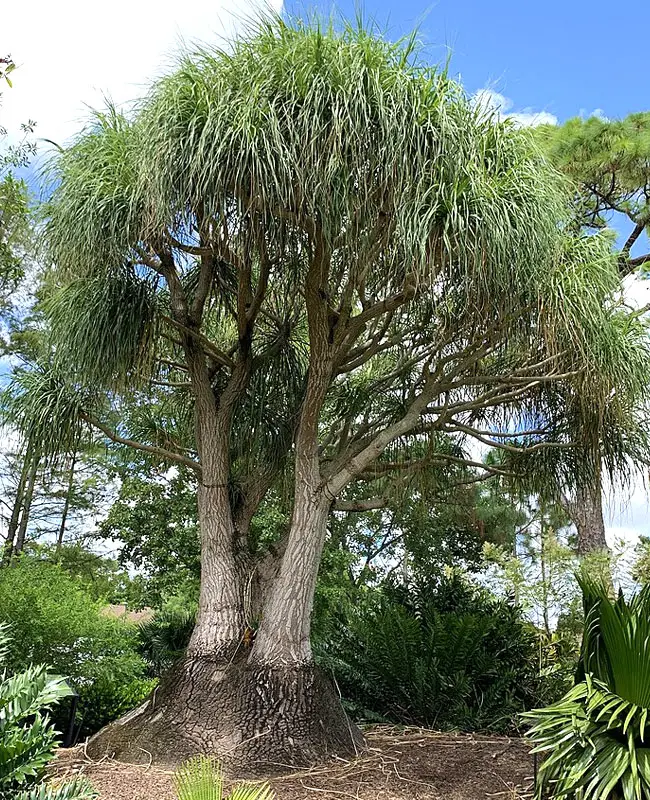
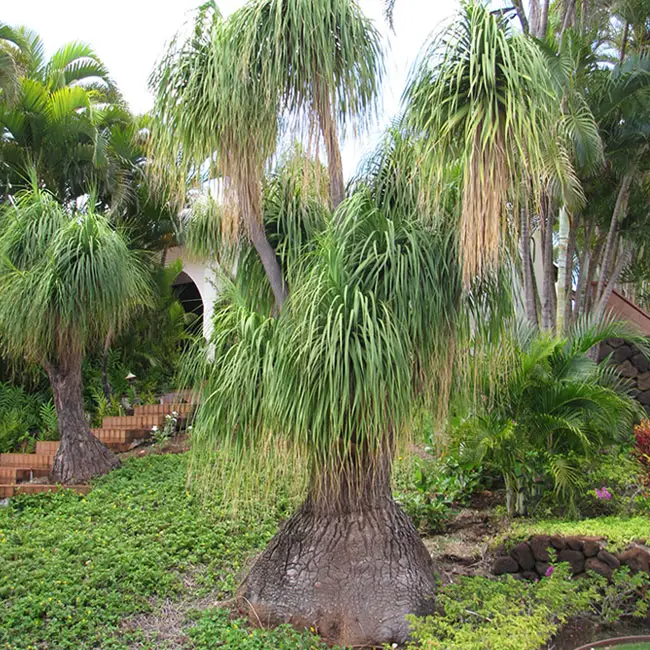
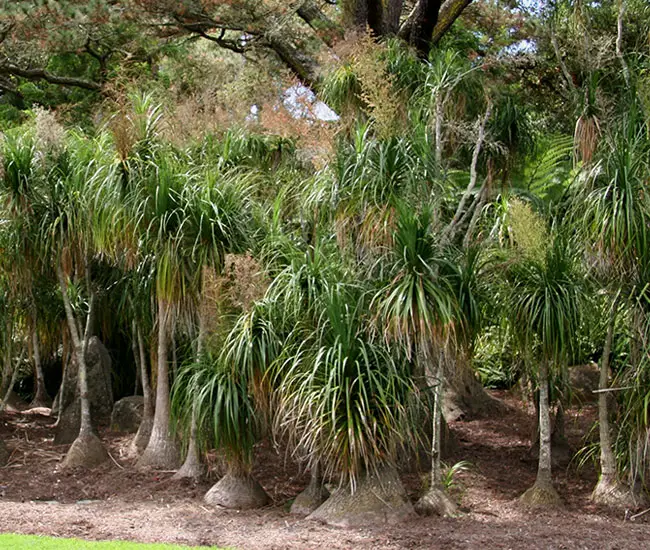
More information can be found on Floridata site.

I have a ponytail palm that is approximately. 40 years old. I am 53 and i got it as a gift when i was a 10 year old boy. It is about 5 feet tall and has seven branches on it. The base is about 12 inches in diameter.
i have two ponytail palms do you know who buys them